What is the most common production system used in global aquaculture?
Struggling to understand aquaculture's complexity? With so many methods, it's hard to know which one dominates. Discover the most widespread system shaping global seafood supply.
The most common production system in global aquaculture is the pond system. Its low cost, simplicity, and adaptability make it the top choice for farmers worldwide, especially across Asia, forming the backbone of the industry and supporting massive production volumes for various aquatic species.
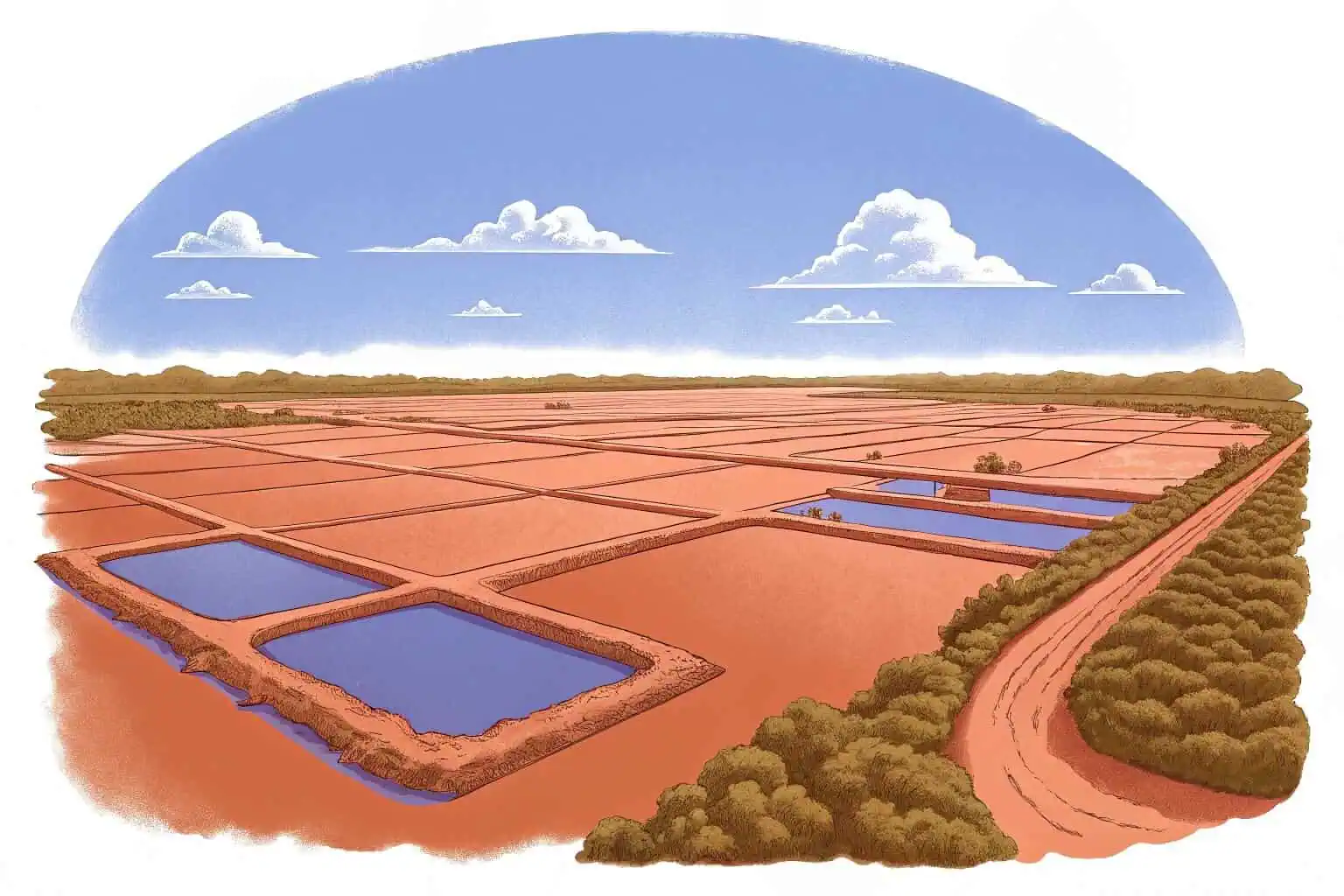
While pond systems are the most prevalent, they are just one piece of a much larger puzzle. To truly grasp the industry's landscape, we need to explore other significant methods and understand the fundamental concepts that drive production. Let's dive deeper into the specifics.
Which system is commonly used for fish farming?
Wondering how most farmed fish are raised? The variety of techniques can be confusing. Let's pinpoint the primary method used to bring fish from farm to table.
For fish farming, pond systems are overwhelmingly the most common method used globally. These earthen ponds offer a cost-effective and scalable solution for raising a wide variety of freshwater fish like tilapia and carp, making them the go-to choice for commercial aquaculture operations worldwide.
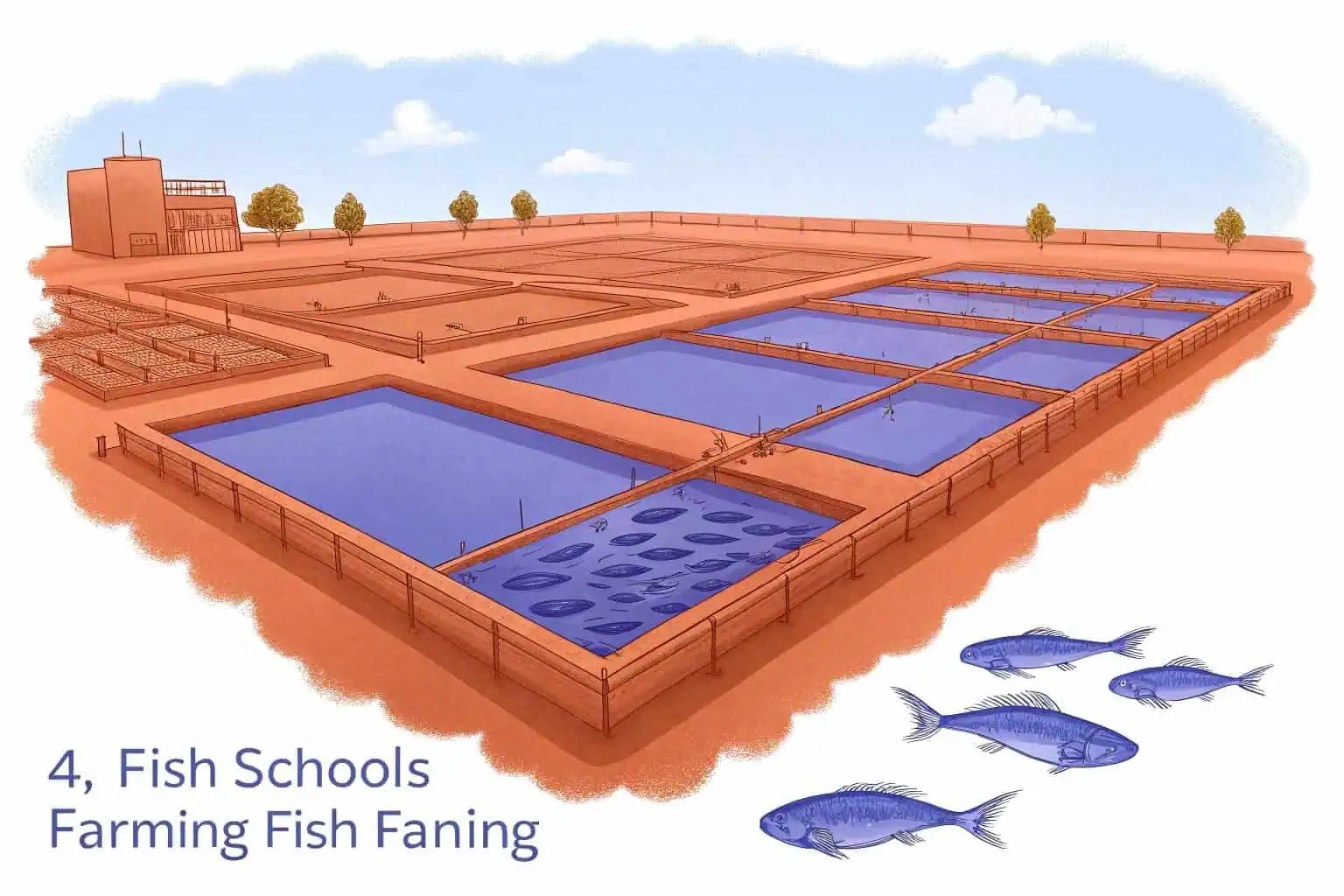
Pond systems have been the cornerstone of aquaculture for centuries, and their dominance comes down to a few key factors. First, their construction and maintenance costs are relatively low compared to more technologically advanced systems. They can be built on various types of land, requiring minimal equipment to get started. This accessibility makes them ideal for small-scale farmers and large commercial enterprises alike, particularly in developing regions. Furthermore, they mimic natural aquatic environments, which can reduce stress on the fish. The versatility of pond systems allows for the cultivation of a diverse range of species. As someone involved in providing equipment like our collapsible fish tanks1, I've seen how adaptable these basic principles are. Even our modern PVC liner tanks with galvanized frames build on the simple, effective logic of the earthen pond, just with added durability and portability.
Why Ponds Dominate
The primary reason for the dominance of pond systems is their economic efficiency[2] and simplicity. I've talked to many farm owners who started with simple earthen ponds because the initial investment is manageable. You don't need complex machinery or a deep understanding of water chemistry to begin. This low barrier to entry has allowed aquaculture to flourish in communities where it's needed most, providing both food and income. The system's ability to utilize natural productivity, where fish can feed on algae and other organisms, also helps keep operational costs down, a crucial factor for any business's bottom line.
Common Species in Pond Culture
The adaptability of ponds means they can host a wide variety of species. This flexibility is key to their global success. Here’s a look at some of the most common ones:
| Species | Key Regions | Important Characteristics |
|---|---|---|
| Tilapia2 | Global (Tropics) | Known for being fast-growing, hardy, and tolerant of various water conditions. |
| Carp | Asia, Europe | Highly adaptable and a cornerstone of traditional polyculture systems. |
| Catfish3 | Americas, Asia | A bottom-dweller that thrives in ponds and is a popular food fish. |
| Shrimp | Asia, Latin America | A high-value species often farmed in coastal brackish water ponds. |
Limitations and Challenges
Despite their popularity, pond systems are not without their challenges. I've seen how operators struggle with issues like water quality, which can be difficult to manage in a large, open environment. They are vulnerable to weather events, and disease outbreaks4 can spread quickly, potentially wiping out an entire stock. Furthermore, traditional ponds require significant land and water resources, which are becoming increasingly scarce. This is where I see the value of modern solutions, like our contained, easy-to-clean tank systems, which help mitigate some of these inherent risks by providing a more controlled environment.
What are the two main types of aquaculture systems?
Confused by the different aquaculture setups? The terminology can be overwhelming. Let's simplify it by breaking down the two fundamental categories that all systems fall into.
Aquaculture systems are broadly categorized into two main types: extensive and intensive. Extensive systems rely on natural productivity with low stocking densities and minimal inputs. In contrast, intensive systems use high stocking densities, require significant external feed, and depend on technology to manage the environment.
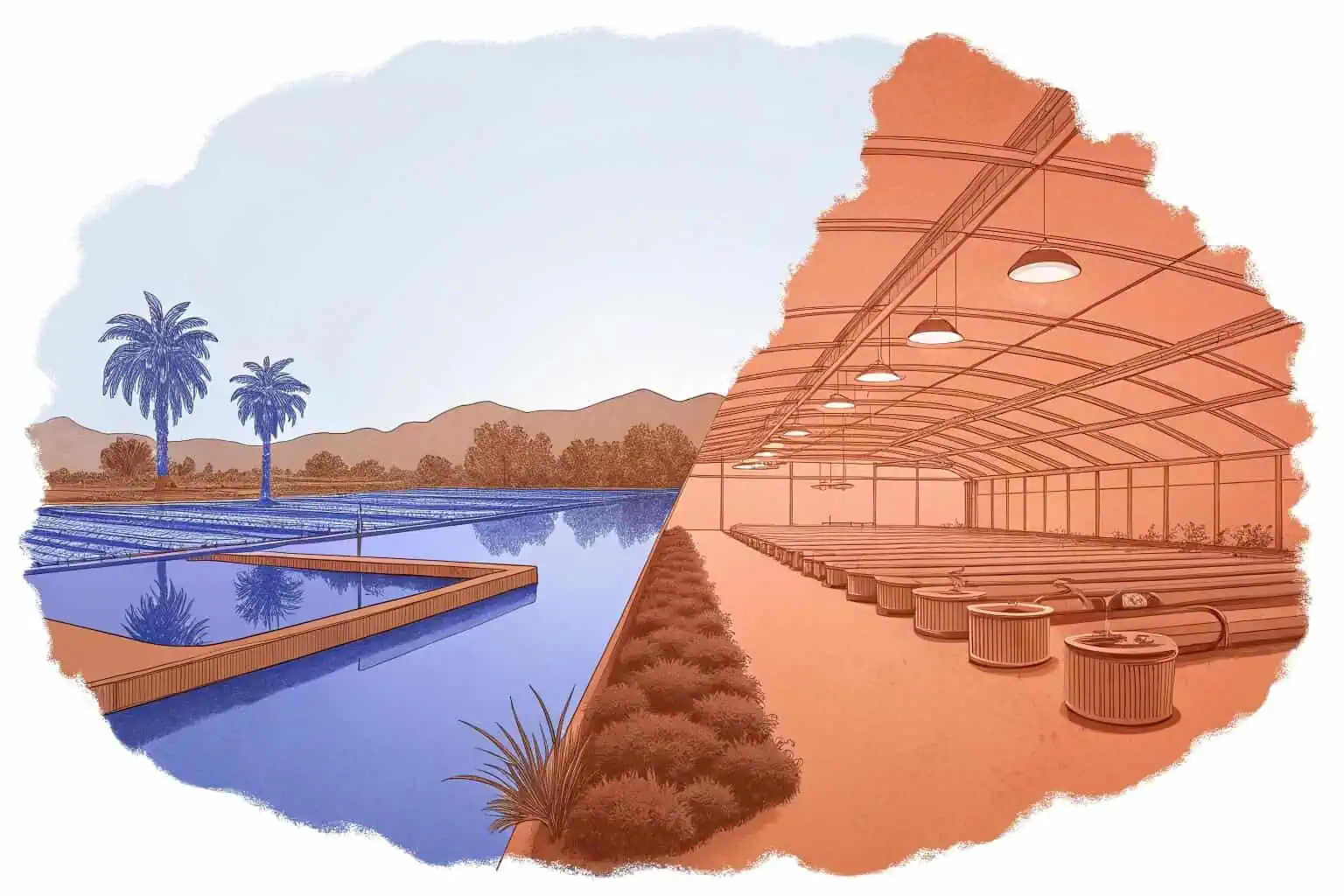
Understanding the difference between extensive and intensive systems is fundamental to understanding the aquaculture industry. I think of it as the difference between gardening and industrial farming. One works closely with nature, while the other seeks to control it for maximum output. Extensive systems are the traditional backbone, representing a low-cost, low-impact approach. Intensive systems, on the other hand, are the future, driven by technology and the need for efficiency. Both have their place, and as a provider of equipment like our robust galvanized sheet fish tanks5, we cater to the more intensive end of the spectrum where durability and control are paramount.
Understanding Extensive Systems
Extensive aquaculture is the classic form of fish farming. Imagine a large pond where fish are stocked at a low density and left to grow by feeding on the natural plankton and algae in the water. This is the essence of an extensive system. The human intervention is minimal—there's little to no supplementary feed, and technology is rarely used. The yield per hectare is low, but so are the costs and the environmental footprint. I've always admired the sustainability of this approach, especially in integrated systems like rice-fish farming6 in Asia, where it creates a beautiful, self-sustaining ecosystem. It’s a method that has worked for centuries.
The Rise of Intensive Systems
Intensive systems are the industry's response to a hungry world. The goal here is to produce the maximum amount of fish from the minimum amount of space and time. This means high stocking densities, where fish are packed closely together in tanks, raceways, or cages. To support this, they rely completely on formulated feeds and sophisticated technology to manage water quality, oxygen levels, and waste removal. Recirculating Aquaculture Systems (RAS)7 are a prime example, filtering and reusing water to create a closed-loop environment. These systems require significant investment and expertise, but their high yields are essential for meeting global seafood demand.
A Comparative Look
To make it clearer, I've put together a simple table comparing the two approaches. Seeing it laid out like this really highlights the trade-offs involved.
| Feature | Extensive Systems | Intensive Systems |
|---|---|---|
| Stocking Density8 | Low | High |
| Feed Source9 | Primarily Natural | Formulated Feeds |
| Technology Use | Minimal | High (Pumps, Filters, etc.) |
| Yield per Area | Low | High |
| Capital & Operational Cost | Low | High |
| Example | Traditional Earthen Ponds | RAS, Net Cages, Raceways |
What is production in aquaculture?
What does "production" truly mean in aquaculture? It's more than just raising fish. Let's clarify this core concept that drives the entire industry's purpose and success.
In aquaculture, production refers to the farming of aquatic organisms like fish, crustaceans, mollusks, and aquatic plants. It involves human intervention in the rearing process, such as regular stocking, feeding, and protection from predators, to enhance output beyond what nature would normally provide.
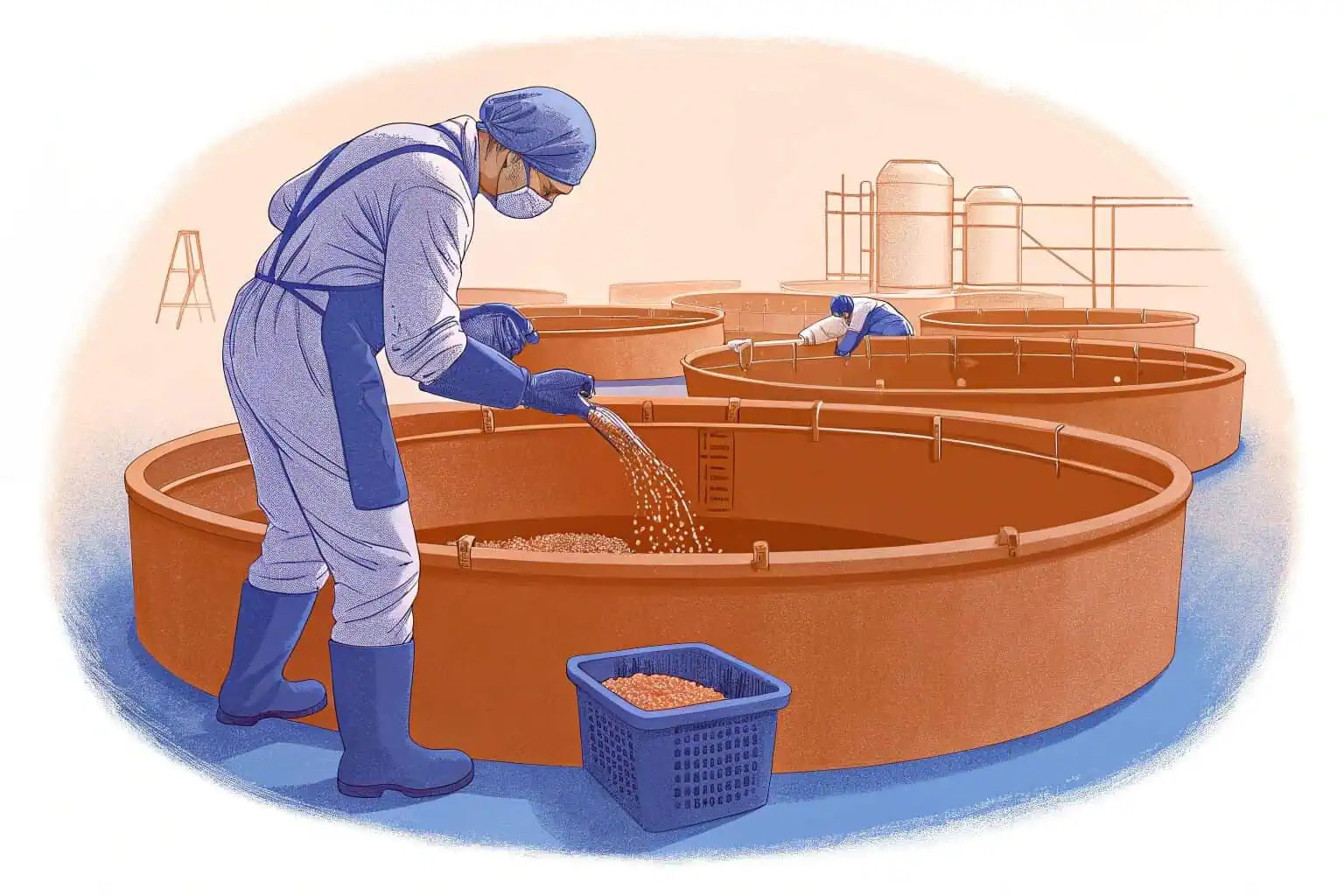
When I talk to clients about their needs, our conversation always centers on production. At its core, aquaculture production is the act of cultivation, a stark contrast to the capture of wild fish. It’s about taking control of the life cycle of an aquatic species to generate a predictable and sustainable harvest. This control is what our business, Bancy, facilitates. By providing reliable infrastructure like our durable, customizable fish tanks10, we empower producers to manage their stock effectively, optimize growth, and ultimately, run a successful operation. It’s a process that turns potential into tangible, valuable products.
The Core of the Process
I believe the essence of aquaculture production11 is hands-on management. It begins with acquiring juvenile animals, or 'seed', from a hatchery. From there, the 'grow-out' phase begins, which is where the real work happens. Producers must create an ideal environment by managing water quality, ensuring proper nutrition through formulated feeds, and protecting the stock from disease and predators. It’s a continuous cycle of monitoring and adjustment. This is where the quality of the equipment becomes critical. A well-designed tank, for instance, can make cleaning easier and improve water circulation, directly impacting the health and growth rate of the fish, and thus, the overall production success.
Measuring Production
In the industry, we measure production in two primary ways12: volume and value. Volume is typically calculated in metric tons of biomass harvested per year. This is the standard for gauging the physical output of a farm or a country. However, as a business, I find that value, measured in currency, often tells a more complete story. A farmer might produce fewer tons of a high-value species like shrimp compared to tilapia, but the shrimp operation could be far more profitable. Understanding both metrics is essential for making smart business decisions and for appreciating the economic contribution of different aquaculture sectors around the world.
Beyond Fish: A Diverse Harvest
It's a common mistake to think aquaculture13 is just about fish. I've worked with operations farming a huge variety of organisms. The term 'production' covers everything from crustaceans like shrimp and crabs to mollusks like oysters and mussels. It also includes a massive and growing sector for aquatic plants, especially seaweed. Each of these categories requires unique farming techniques and equipment. For example, oyster farming14 might use racks in coastal waters, while seaweed is often grown on longlines suspended in the sea. This diversity is one of the industry's greatest strengths, allowing it to adapt to different environments and meet a wide range of market demands.
Where is the majority of aquaculture globally located?
Ever wonder which part of the world leads aquaculture? The answer might surprise you. Let's explore the global hub that dominates seafood production and shapes the entire industry.
The vast majority of global aquaculture production is located in Asia. The continent accounts for over 90% of the world's output, with China being the single largest producer by a significant margin, followed by countries like India, Indonesia, Vietnam, and Bangladesh.
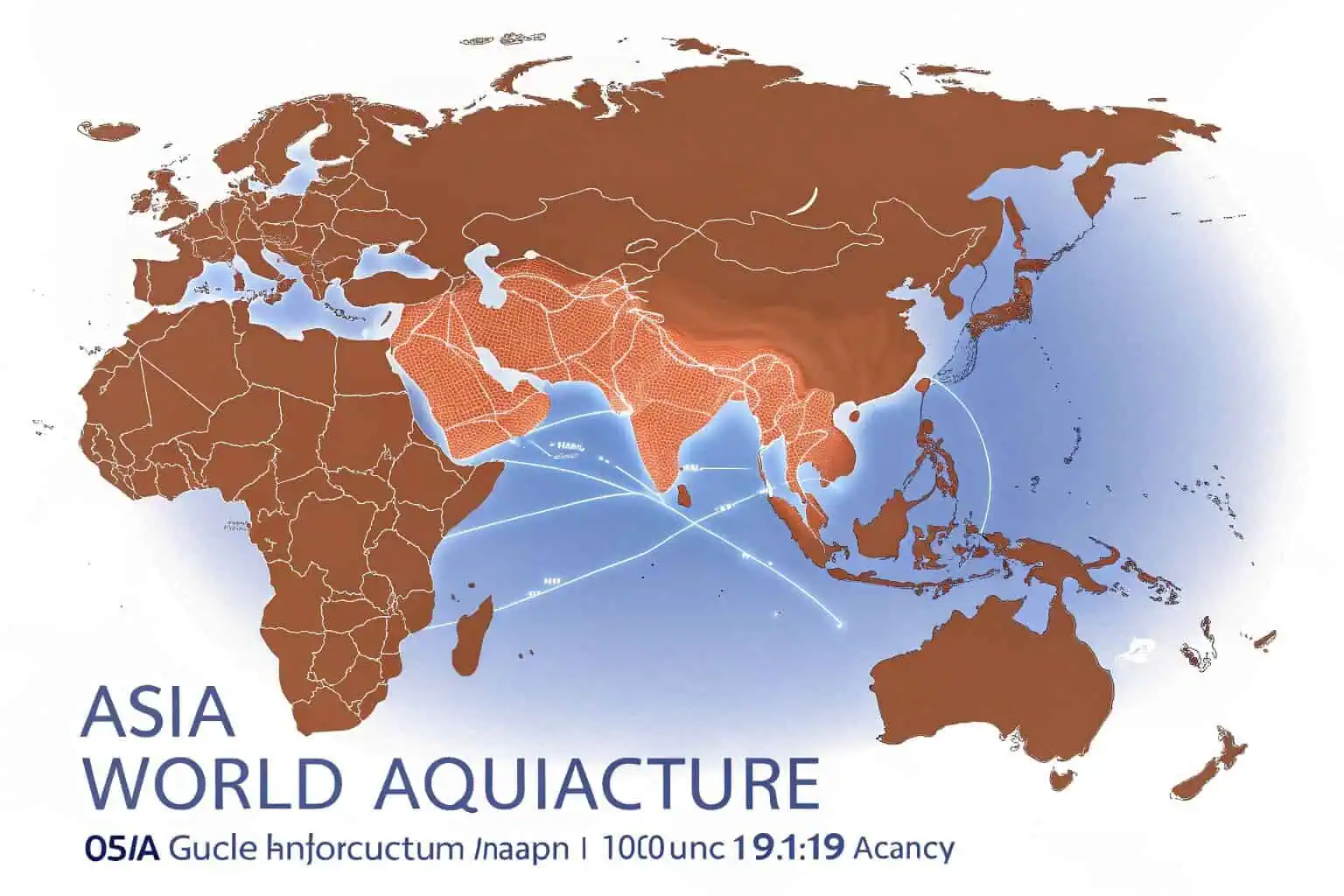
When I look at the global aquaculture map15, the dominance of Asia is impossible to ignore. This isn't just a statistic for me; it's a reality that shapes our business strategy. The region's long history of fish farming, combined with favorable climates and immense water resources, has created a true industry powerhouse. China's output alone is staggering, but the collective production of countries like India, Indonesia, and Vietnam is what solidifies the continent's position. This concentration of activity means it's a key market for equipment and technology, and a source of innovation that influences aquaculture practices worldwide.
Asia's Unrivaled Dominance
Asia's leadership in aquaculture16 is built on a foundation of tradition, resources, and sheer scale. For centuries, fish farming has been an integral part of life in many Asian cultures. This deep-rooted experience provides a strong base of knowledge. Add to that the continent's vast coastlines, mighty river systems, and a climate that supports year-round farming for many species, and you have a recipe for success. Government support has also played a crucial role, promoting aquaculture for food security and economic growth. It’s this powerful combination of factors that has allowed Asia to not just lead, but completely dominate the global aquaculture landscape.
Key Players in the Region
While China is the giant, several other Asian nations are formidable producers in their own right. I've had the opportunity to interact with businesses from these countries and their contribution is immense.
| Country | Key Production Focus | Global Significance |
|---|---|---|
| India | Freshwater carp, shrimp17 | The world's second-largest producer, driven by a massive domestic market. |
| Indonesia | Shrimp, tilapia, seaweed | An archipelago with enormous potential in both marine and freshwater farming. |
| Vietnam | Pangasius (catfish), shrimp18 | A top global exporter, especially known for its pangasius industry. |
| Bangladesh | Freshwater fish (tilapia, carp) | Aquaculture is absolutely critical for national food security and rural livelihoods. |
The Rest of the World
Outside of Asia, other regions have developed specialized and valuable aquaculture industries. In Europe, Norway stands out as a leader in farming Atlantic salmon in marine net pens, a high-tech, high-value sector. Across the Atlantic, Chile is another salmon farming giant, while the United States has significant industries for catfish and oysters. I'm also watching Africa with great interest; countries like Egypt are already major tilapia producers19, and the continent holds vast, untapped potential for growth. However, it's important to keep perspective: the combined output of all these regions is still just a fraction of what Asia produces.
Conclusion
From traditional ponds in Asia to high-tech systems globally, aquaculture's diversity is its strength. Understanding these methods and key regions is crucial for navigating this vital, ever-evolving industry.
-
Discover the advantages of collapsible fish tanks for aquaculture, including portability and ease of use. ↩
-
Explore the advantages of Tilapia farming, including its fast growth and adaptability, which can enhance your aquaculture practices. ↩
-
Learn about Catfish farming techniques and their benefits, making it a popular choice for sustainable aquaculture. ↩
-
Exploring disease prevention strategies can help operators safeguard their stocks and enhance the resilience of their aquaculture systems. ↩
-
This link will provide insights into the advantages of durable fish tanks, essential for efficient aquaculture practices. ↩
-
Discover the unique integration of rice and fish farming, which promotes sustainability and biodiversity in agriculture. ↩
-
Explore this link to understand how RAS can revolutionize fish farming and contribute to sustainable seafood production. ↩
-
Understanding stocking density is crucial for optimizing fish health and production efficiency in aquaculture. ↩
-
Exploring feed sources can reveal how nutrition influences growth rates and sustainability in fish farming. ↩
-
Discover why durable, customizable fish tanks are essential for optimizing fish growth and ensuring a successful aquaculture operation. ↩
-
Exploring this link will provide insights into effective strategies and innovations in aquaculture production, enhancing your understanding. ↩
-
Exploring this link will provide insights into effective production measurement methods in aquaculture. ↩
-
Exploring this link will provide insights into aquaculture's role in sustainability and food security. ↩
-
This resource will offer valuable information on effective techniques and innovations in oyster farming. ↩
-
Exploring this link will provide insights into the global aquaculture landscape and its impact on industry strategies. ↩
-
Exploring this link will provide insights into the innovations and practices shaping the future of aquaculture in Asia. ↩
-
Explore this link to understand the economic and environmental advantages of freshwater carp and shrimp farming. ↩
-
Discover the significance of pangasius in aquaculture and its impact on global markets. ↩
-
Discover the leading tilapia producers and their impact on the global aquaculture market. ↩